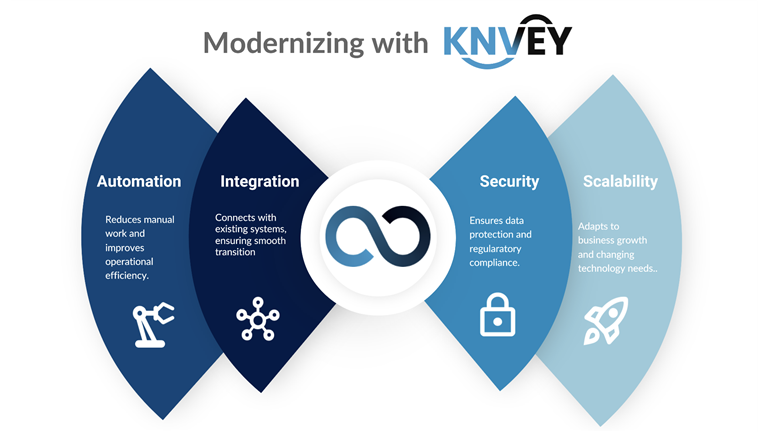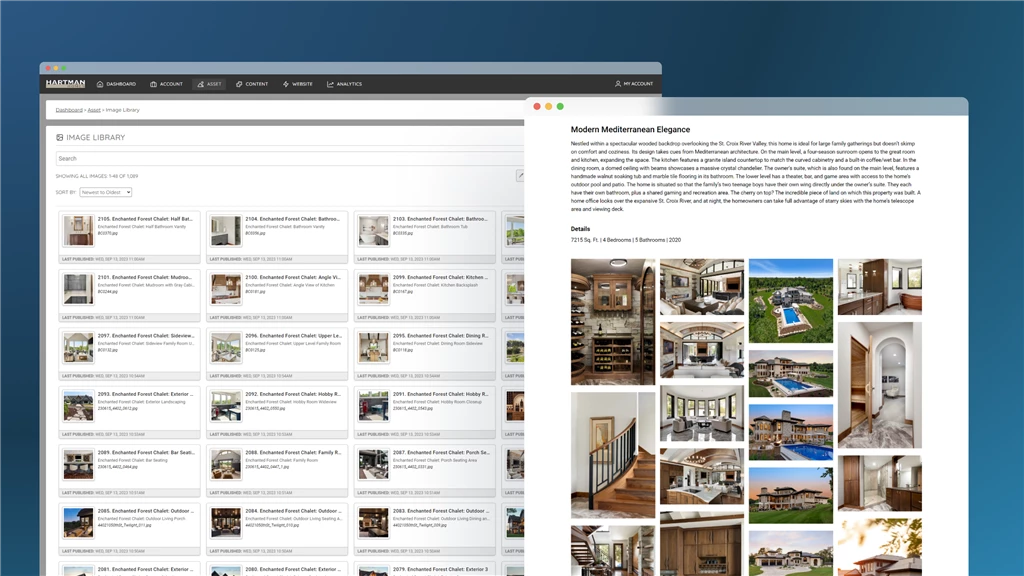"If it’s not broken, why fix it?" This is the mindset many businesses have when it comes to their legacy systems—until they realize those outdated tools are silently costing them time, money, and growth opportunities.
Consider the challenges: Are your systems slowing down workflows? Do you rely on software that barely integrates with modern tools? Are employees forced to use workarounds for simple tasks?
Many businesses face these same struggles. Technology that once worked well may now limit efficiency, create security risks, and hinder scalability. However, modernization doesn’t have to mean starting over from scratch.
This guide will walk you through how to upgrade your legacy systems step by step—without disrupting your business. Whether the goal is to streamline operations, improve security, or enhance the customer experience, this roadmap will show you how to move from outdated to optimized with a clear, strategic approach.
The Need for Modernization
Many organizations continue to rely on legacy systems that were once effective but now present significant operational challenges. As technology evolves, outdated software and infrastructure can lead to inefficiencies, security vulnerabilities, and integration difficulties that slow business growth.
Rather than completely replacing existing systems, modernization provides a strategic path forward. By upgrading infrastructure, improving integrations, and optimizing workflows, businesses can increase efficiency, enhance security, and establish a scalable foundation for future growth.
This guide explores the key benefits of modernization, examines various strategies, and provides a step-by-step roadmap for a seamless transition to a more agile, future-ready system.
The Business Benefits of Modernization
Modernizing legacy systems is not simply about updating technology—it’s about optimizing business performance. Organizations that invest in modernization gain significant advantages across multiple areas:
Increased Efficiency
Older systems often require manual interventions, slowing down operations and increasing the likelihood of errors. Modern solutions enhance automation, streamline workflows, and ensure that data is easily accessible across teams, improving overall productivity.
Enhanced Security and Compliance
Legacy systems are more vulnerable to cyber threats due to outdated security protocols. Modernization allows businesses to implement advanced security measures, encryption, and compliance standards, reducing risks and ensuring regulatory adherence.
Cost Savings
Maintaining outdated infrastructure can be costly, with ongoing maintenance expenses, inefficiencies, and downtime impacting profitability. Modern systems reduce IT overhead, lower maintenance costs, and improve return on investment.
Improved Customer Experience
Today’s customers expect fast, seamless interactions. Legacy systems can slow down response times and limit service capabilities, while modern solutions enable real-time engagement, personalization, and multi-channel accessibility.
Scalability and Future Growth
As businesses expand, they need technology that can grow with them. Modern systems offer greater flexibility, cloud-based scalability, and integration capabilities that support evolving business needs.
Choosing the Right Modernization Strategy
There is no one-size-fits-all approach to modernization. Businesses must assess their current technology and determine which strategy aligns best with their objectives. The four most common approaches include:
Rehosting ("Lift and Shift")
This approach involves moving existing systems to a cloud-based environment with minimal modifications. It is a cost-effective solution for companies looking to improve system performance without significant redevelopment.
Re-platforming
Re-platforming makes small adjustments to improve a system’s performance while retaining its core architecture. This approach enhances integration capabilities and optimizes the user experience without requiring a complete rebuild.
Refactoring
For businesses seeking long-term flexibility, refactoring involves restructuring the existing system’s code to improve scalability, efficiency, and security. This option requires more development work but results in a more adaptable and future-proof system.
Replacing
In cases where legacy systems are too outdated to modernize effectively, replacing them with a fully new, cloud-native solution may be the best option. While this is the most significant investment, it offers the most modern capabilities, automation, and long-term business value.
Choosing the right strategy depends on factors such as budget, business goals, and the current state of existing systems. A clear assessment of needs and priorities will help determine the best path forward.
A Step-by-Step Roadmap to Modernization
A well-structured modernization plan ensures a smooth transition while minimizing risks. The following steps outline a strategic approach to upgrading legacy systems:
Step 1: Assess the Current System
The first step is to conduct a full evaluation of the existing technology infrastructure. Identifying pain points, security vulnerabilities, and operational inefficiencies will help determine where improvements are needed.
Step 2: Define Business Goals
Modernization should align with broader business objectives. Whether the goal is to improve efficiency, reduce costs, enhance security, or support business growth, having clear priorities will guide decision-making.
Step 3: Select the Right Modernization Strategy
Based on the assessment, organizations should determine whether rehosting, re-platforming, refactoring, or replacing is the most effective approach. The decision should consider both immediate needs and long-term scalability.
Step 4: Choose the Right Technology and Platform
Adopting modern, cloud-based solutions ensures that the updated system is flexible, scalable, and compatible with other business tools. Choosing the right platform is critical to future-proofing operations.
Step 5: Develop a Migration Plan
A detailed migration strategy should include a timeline, risk assessment, and phased implementation plan. A well-planned rollout reduces disruption and ensures a smooth transition.
Step 6: Implement and Test the New System
Before full deployment, the new system should undergo thorough testing to confirm security, compatibility, and functionality. Identifying and addressing potential issues before going live minimizes business disruption.
Step 7: Train Teams and Drive Adoption
Successful modernization requires user adoption. Providing training, resources, and ongoing support ensures employees can effectively utilize the new system, maximizing the return on investment.
Step 8: Monitor and Optimize
Modernization is an ongoing process. Regular evaluations, security updates, and system optimizations help maintain efficiency and adapt to evolving business needs.
How KNVEY Supports Seamless Modernization
Technology modernization is often seen as a complex and costly process, but with the right platform, businesses can simplify the transition. KNVEY provides a powerful digital experience platform designed to help organizations move beyond outdated technology and into a streamlined, modernized future.
Rather than struggling with disconnected workflows, slow processes, and security vulnerabilities, businesses can leverage KNVEY to unify their digital operations and drive innovation.
Case Study: How Digi International Streamlined Asset Management and Customer Support with KNVEY
Overview
Digi International, a global leader in IoT connectivity solutions, continuously seeks innovative ways to enhance customer support and optimize asset management. With a vast library of technical documentation, firmware updates, product guides, and support materials, Digi needed a more efficient way to organize, manage, and distribute digital assets to both customers and internal teams.
By implementing KNVEY’s Unified Digital Experience Platform, Digi transformed its support and content management processes, leveraging automated workflows, AI-powered search, dynamic content collections, and scalable asset management tools. This resulted in a seamless, self-service portal that improves customer experience, streamlines internal workflows, and ensures content remains up to date and easily accessible.
Challenges: Managing a Complex Digital Ecosystem
Before implementing KNVEY, Digi faced significant challenges in managing its extensive digital infrastructure.
1. Fragmented Asset Management
Digi's digital content was spread across multiple, disconnected systems, making it difficult for both customers and internal teams to locate the right documents efficiently. The lack of a centralized digital asset management (DAM) system led to outdated content, inconsistencies, and redundant files.
2. Inefficient Search and Navigation
With thousands of resources, customers struggled to quickly find firmware updates, troubleshooting guides, and technical specifications. Without an intelligent search system with advanced filtering options, locating relevant information was time-consuming and frustrating, leading to a higher volume of customer support requests.
3. High Support Ticket Volume
Due to the complexity of Digi’s product offerings, customers frequently required assistance. Without a structured self-service knowledge base, Digi’s support team was overwhelmed with repetitive inquiries, resulting in longer response times and increased operational costs.
4. Scaling Content for Growth
As Digi’s product catalog and support materials grew, so did its content management challenges. The company needed a scalable enterprise content management system (ECMS) that could support the continuous expansion of assets while maintaining efficient content governance and version control.
Solution: KNVEY’s Unified Digital Experience Platform
Digi partnered with KNVEY to implement a centralized, AI-powered content management and customer support system. This transformation enhanced content discoverability, streamlined workflows, and improved operational efficiency.
1. Workflow System: Automating Content Publishing & Updates
Managing thousands of assets manually was no longer viable. With KNVEY’s Workflow Automation System, Digi was able to:
- Automate content approvals and updates, ensuring documentation remains accurate and up to date.
- Assign role-based access controls to different teams, streamlining collaboration and maintaining content integrity.
- Track content version control, ensuring compliance and consistency across all product documentation and support materials.
2. Content Collections: Organizing Thousands of Digital Assets
Digi utilized KNVEY’s intelligent Content Collections to:
- Group related assets into structured collections, making it easier for customers to find relevant documentation.
- Categorize content by product type, update status, and user role (e.g., developer, IT admin, end-user).
- Ensure automatic version updates, reducing duplicate content and eliminating outdated resources.
3. Advanced Keyword Search & Filters: Improving Resource Discovery
KNVEY’s AI-powered search capabilities transformed how Digi’s customers accessed critical information:
- Customers can search by keyword, product name, file type, and category to find exactly what they need.
- Smart filters allow users to refine search results, reducing time spent navigating large content sets.
- AI-driven recommendations dynamically suggest related resources based on user behavior and search history.
4. Managing Thousands of Assets: A Scalable, Future-Proof System
Digi needed a long-term solution to manage its continuously expanding digital assets. KNVEY’s scalable content management system (CMS)enabled Digi to:
- Store, organize, and retrieve thousands of documents, videos, and technical files without performance issues.
- Maintain content version control, preventing outdated materials from causing confusion.
- Seamlessly integrate with existing enterprise software, ensuring smooth content distribution across multiple platforms.
Results: A More Efficient, Scalable, and User-Friendly Platform
By implementing KNVEY, Digi achieved significant improvements in content management and customer support efficiency.
Enhanced Customer Self-Service
- Customers can now find answers faster, leading to a significant reduction in support tickets.
- The centralized self-service portal ensures a single source of truth, eliminating inconsistencies in product information.
Increased Efficiency for Internal Teams
- Automated workflows reduced content management time, allowing Digi’s teams to focus on innovation and high-priority tasks.
- The support team spends less time addressing repetitive inquiries, improving response times for complex cases.
Optimized Asset Management for Growth
- Scalable content collections enable seamless expansion of Digi’s digital resources without performance bottlenecks.
- AI-powered search and filtering tools improve content discoverability, reducing frustration for both customers and employees.
Improved Customer Satisfaction & Engagement
- Faster access to accurate information boosts customer confidence in Digi’s products.
- Streamlined content workflows ensure customers receive timely updates and better support experiences.





